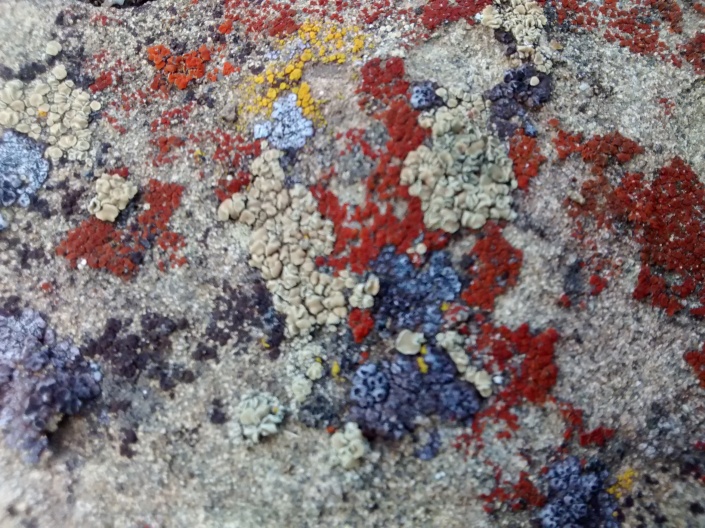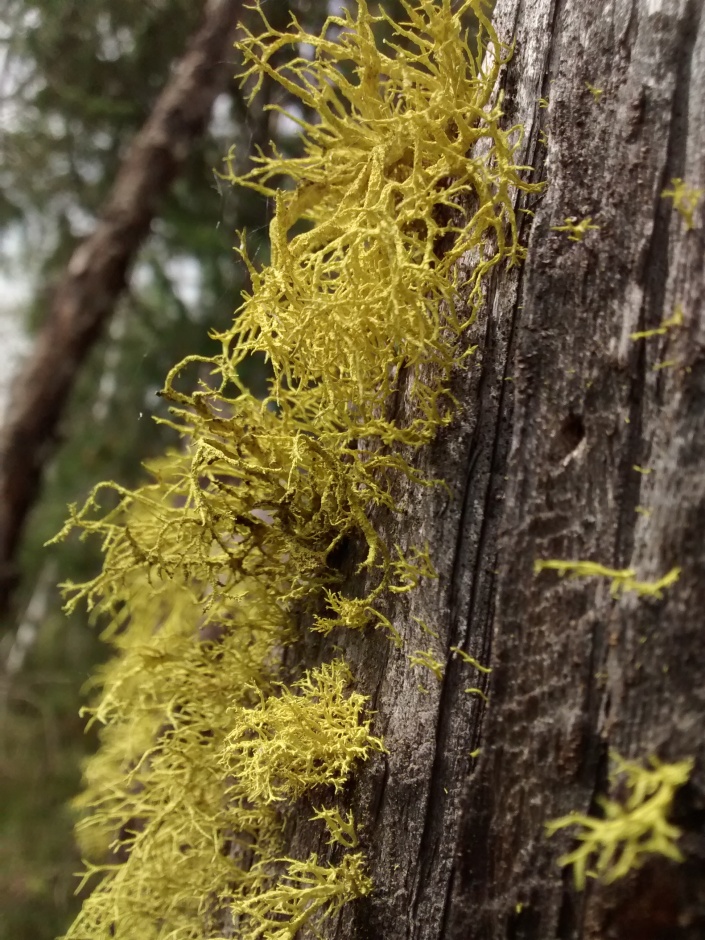Winter Lichen Hunting Memories
It’s raining tonight (February 23rd) and quite unpleasant outside. Today I retrieved from a drawer the lichen samples I collected last summer in Canada, with the intention of finally identifying the species. While traveling I discovered that the plastic clam boxes that fruit is sold in make great traveling sample containers for all sorts of delicate pieces of lichen as well as shells, bark, fallen birds’ eggs and dead bugs. I like to bring home all those things, look at them for a while then return them to the woods and fields to keep their place in the cycle of life.
Often, in many places, the only way berries and other small produce is sold is in plastic clamshell boxes, so I ended up with a few of them during our travels. I don’t buy food in plastic containers, but made a temporary exception during a few days of the trip. The paper envelopes usually used to hold lichen samples work the best, and they too can rejoin the circle of life when we are done using them. So now I’m sorting out the lichens from their plastic cages, and enjoying the memories of finding them during the summer’s travels.

The Peltigera in British Columbia can also be found here in Wisconsin. When walking the KVR Wintergreen Bluff Trail stop at Lichen Site 4 (the rocky flat area) and look carefully for this species. There is quite a large area of them. Please stay on the trail while looking, so you don’t crush the Tiny Ones! At different times and weathers, these lichens will change dramatically, from being almost invisible to looking like they do in this picture.

Here’s what the bench land looks like above the Columbia River in southeast British Columbia. This is a Nature Conservancy area so has been protected from excessive damage. Much of the bench lands are built on, and the lichens are few in those places.

Walking the trails here, this is what the ground looks like:

While walking, and especially biking through here, looking out at the scenery or the next obstacle to maneuver around, the life on the ground is something no one notices. Yet this microbiome is holding all the larger life in place, creating and protecting an environment, shelter, food supply system, promoting health, preventing erosion and more. As it disappears when we travel over it or dig it up, the diversity and therefore the sustainability of the whole area fails.

When we step on the ground here, it sounds a bit crunchy, and it is; the dry lichens break off and the delicate crust on the surface of the ground is broken open. All dry, open soils naturally have some microbiome crust, unless disturbed. This allows dry grasslands and even deserts to support a tremendous variety and number of living beings, from plants to insects, birds, mammals, reptiles and even humans.
These dry grassy areas in the western areas of our continent should be covered in some form of this microbiome. When visiting these areas, go slowly and look at what is on the soil and rocks, then step carefully. There is a miniature world at your feet as complex as the world of trees, grass and animals we are familiar with.
Leaving the dry grasslands and moving into the more tree covered slopes of the lower mountain elevations, there continues to be much life on the soil and rocks, but the trees also support a vast community of lichens. From deep rainforest communities to dry open pine forest, lichens love it here.


The colors and shapes rival any garden. Each time a new rock is found, the lichen shapes and colors are different. Trees are festooned with bright yellow, pale yellow and greens of Usnea and Vulpicida as well as the grays and greens and blacks of Letharia, Hypogemnias and more.


Yes, I do get those seed catalogs, and can get lost dreaming in them on winter days, but an excellent variation of that pastime is looking at lichen pictures. If there are not enough pictures here for you, try the best lichen picture site ever -Stephen Sharnoff’s amazing website. Add some color and amazement to your gray winter days by sharing this lichen blog and Sharnoff’s site too, with others, especially kids!
Contact us at the Kickapoo Valley Reserve if you want help learning about lichens. Come out and walk the Lichen Trail. Even in winter you’ll find some color and intrigue in Lichen Land. Thanks for reading this blog. Please share with others, to spread the news about our friends in Lichen Land.

February 25, 2019 at 3:56 pm
So beautiful!! Thank You for noticing this strata of the life force and calling it to our attention. I appreciate it. Especially being called to notice the fragility….
LikeLike